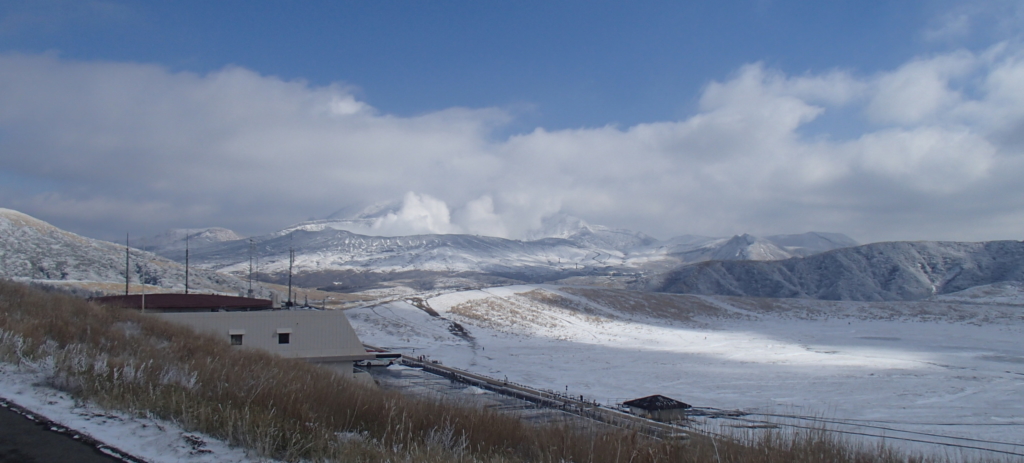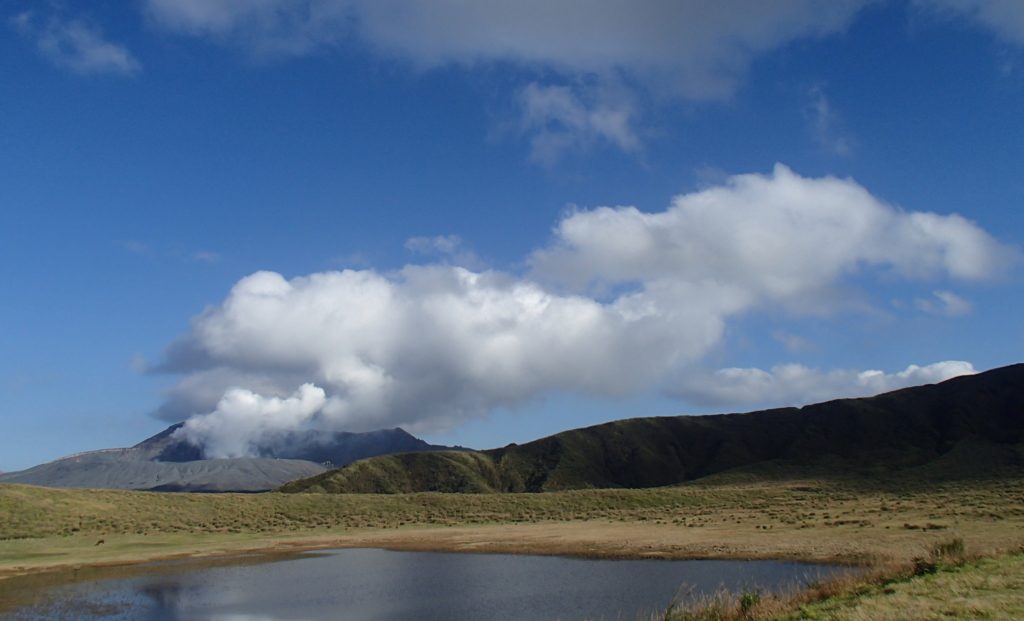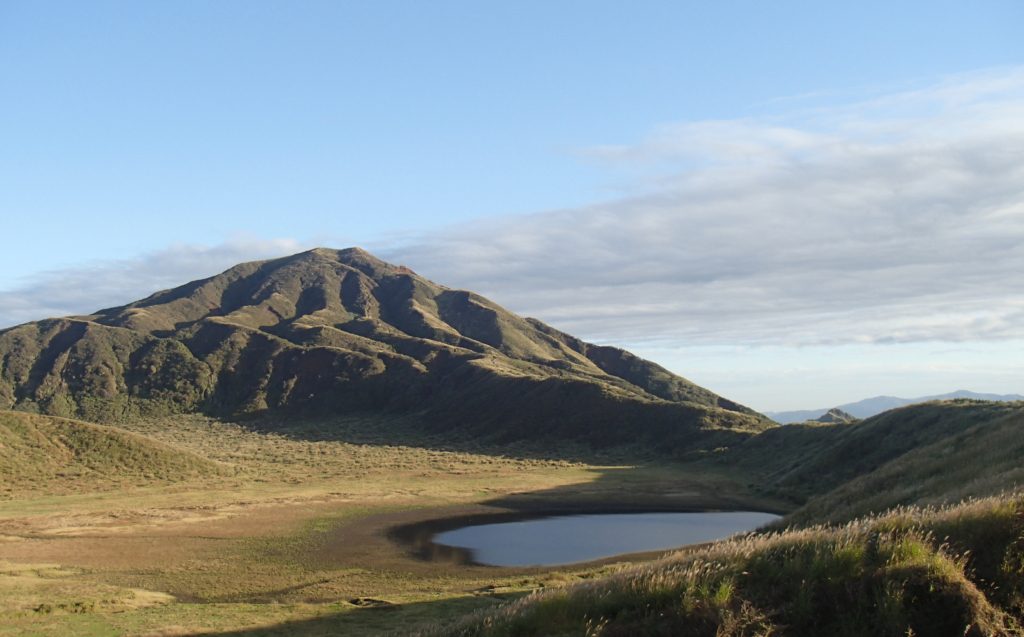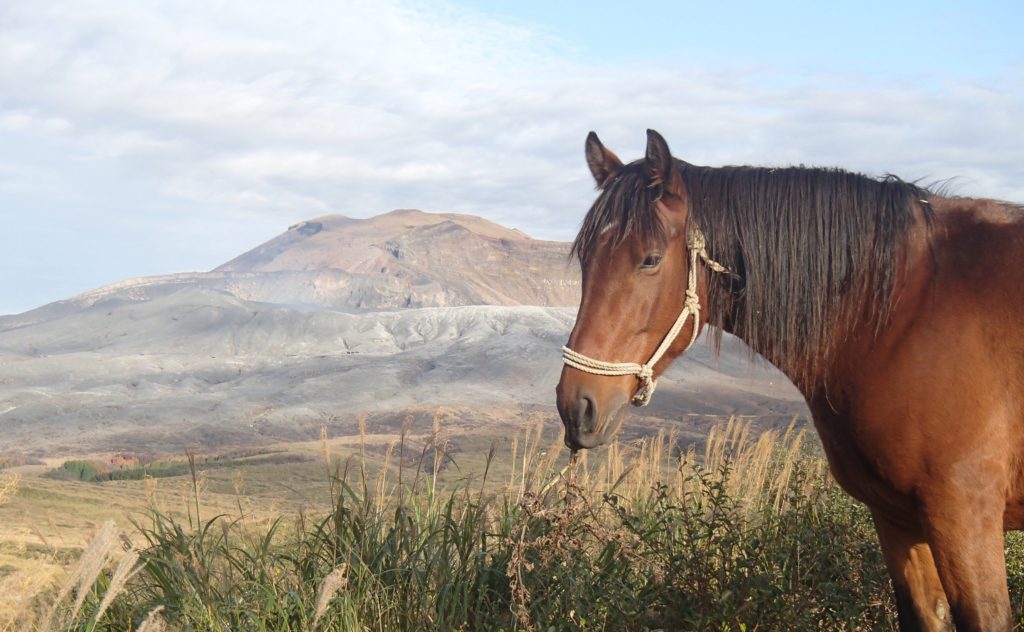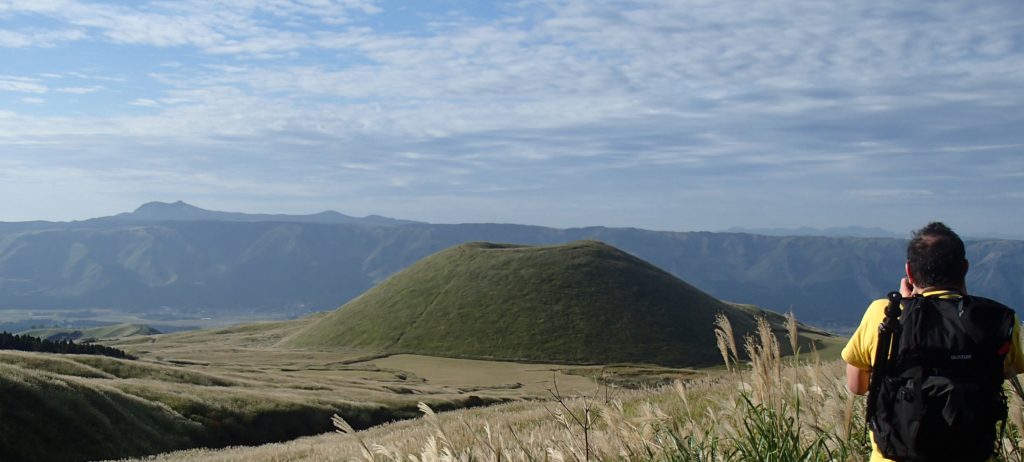The title Mount Aso Volcano is a little misleading as the whole central mountain range within the Aso caldera is comprised of volcanos, fortunately only one is still active.
Mt. Nakadake – Mount Aso’s active volcano
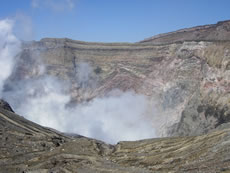 Nakadake long worshipped as a powerful god, the active volcano at the center of Mount Aso is a rarity, not only does it have the title of the most active volcano in Japan, but it’s also the only one that you get close enough to stare into the steaming crater. If this sounds dangerous you are right, which is why the volcano is VERY closely monitored and access is restricted if there is any possible danger.
Nakadake long worshipped as a powerful god, the active volcano at the center of Mount Aso is a rarity, not only does it have the title of the most active volcano in Japan, but it’s also the only one that you get close enough to stare into the steaming crater. If this sounds dangerous you are right, which is why the volcano is VERY closely monitored and access is restricted if there is any possible danger.
Find out the current safety status of the volcano here.
The volcano goes through cycles of activity, at its calmest the crater fills with a lime green lake which gently steams, as activity increases the lake boils off and disappears, the mud glows red hot, dries and eventually cracks, once a vent has opened in the crater bottom eruptions are possible. Since August 2014 it has moved to a more active phase. After a large erution at the beginning of October 2016 the volcano is currently at Level 3 with a 2 km exclusion zone. Unfortunately this means the ropeway to the crater mouth is closed and access to the crater is restricted. Sightseers can currently go as far as Kusasenri from where you get the view below. You will also be able to see shots of inside the crater if you visit Aso Volcano Museum.
Click here to see live footage of Nakadake Crater right now.
Explore Kumamoto can add a trip to Kusasenri and Nakadake as part of your custom made Around Aso tour, just contact us with your request.
The volcano has long been worshipped as a deity, the area at the base of the crater once had a huge complex of 88 temples and hermitages. Nowadays there is only a small buddhist temple remaining, built to celebrate an Indian buddhist monk who visited in 726 AD. Behind the ropeway station there is also a dilapidated concrete shinto shrine built to worship the deity of the volcano, rites are still performed by the priests from Aso Shrine here to pacify the Kami when the volcano is active. Beyond here the transition in landscape from lush, green grassland to the grey, ashen lunar desert around the crater can be seen. Short helicopter rides over the crater are available for 5000 Yen per person.
Whether you can access the crater or not, a visit to Nakadake and the vast green expanse of Kusasenri is still worth the journey. There are 3 routes up from the base of the caldera to the high plateau of Kusasenri. One each from the west, south and east, each winding through a wonderful landscape of rolling pastures dotted with the photogenic Akaushi, Aso’s unique breed of cow, rising to the dramatic peaks of the five volcanic peaks which make up Aso’s central range. Since the earthquakes of April 2016 only one route is open which is the Eastern route which starts from in front of Aso Station, because repairs are still being made the road closes from 7pm and reopens at 7 am, in the case of very heavy rain the road may also be closed.
Kusasenri
Kusasenri is the main destination for tourists visiting Mount Aso, (the name means 1000 ri of grass, ri is an old form of Japanese measurement, one ri is roughly equal to a length of 4000 m). This vast grassland is actually the mega crater of Eboshidake (1337m). Active just over 20,000 years ago the two vast craters have been filled in with volcanic pumice from other other eruptions, as you walk around consider for a minute that the magma is still brewing away just a couple of km beneath your feet. Rainwater often accumulates on the plain forming temporary lakes, there are horses available to ride and when they’re not working it’s nice to see them wandering freely around the area (the horses are very tame and happy to be stroked). There is a 2 hour hiking course which is currently permitted, this takes you up and around the edge of Kusasenri to the top of the Eboshidake peak (in pic above) this hike gives you views of the smoking crater and in clear conditions panoramic views of the caldera below. Usually you can also take a shorter hike to the peak of Kishimadake (1321m) or combine the two, however due to the volcano rising to Level 3 this is currently out of bounds. A map of hiking routes can be picked up inside the Aso Museum at the information desk.
Behind the carparks you will see the Aso Volcano Museum, entrance is a rather expensive 800 yen for adults, however you can pick up a discounted ticket for 500 yen at Aso Station. The highlight of the museum is the short film ‘Four seasons of Aso’. The museum has some information in English but to make the most of it ask for a free audio guide.
Next to the museum there are several restaurants, gift shops, cafes and restrooms.
How to get there
By public transport take a bus from Aso Station, it’s around a 30 minute drive up to the Kusasenri plateau. The best way to get there of course is by car or book a guide for an Around Aso Tour as you will be able to stop off at many places enroute including the picturesque baby volcano Komezuka on the way.

